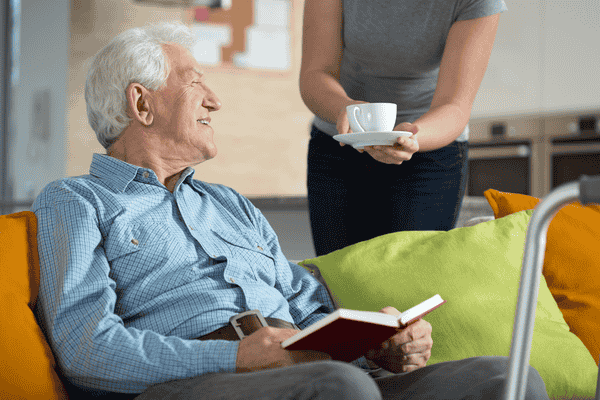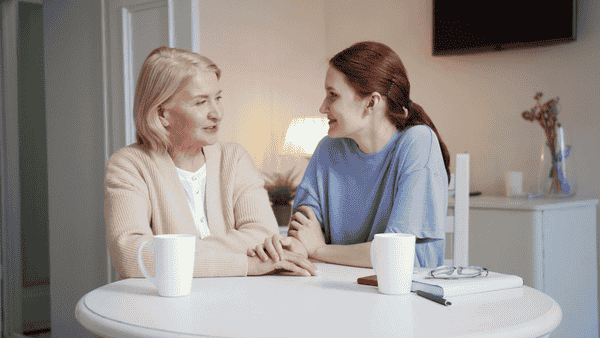Dans une petite ville de l’Ontario, le soleil commençait à se lever à l’horizon, projetant une douce lueur à travers la fenêtre de la cuisine. Maria, une soignante dévouée, se préparait pour une nouvelle journée d’aide aux personnes âgées de sa communauté. Elle aimait son travail, mais il comportait des défis. Après une longue semaine passée à soulever et à transférer des patients, son dos commençait à ressentir la tension et à nécessiter davantage de mécanique corporelle.
En sirotant son café du matin, Maria réfléchissait à ses expériences. Elle se souvenait de la première fois où elle avait aidé une personne âgée à passer d'un fauteuil roulant à un lit. La gêne de ce moment persistait encore dans son esprit. Elle était anxieuse et incertaine, et il ne lui a pas fallu longtemps pour comprendre l'importance de maîtriser la mécanique corporelle. Aujourd'hui, elle était déterminée à partager ce qu'elle avait appris avec les autres.
Comprendre la mécanique corporelle
Maria a compris que la mécanique corporelle adéquate implique d'utiliser le corps efficacement pour effectuer des tâches, en minimisant le risque de blessure. Il ne s'agit pas seulement de soulever des objets lourds, mais de comprendre comment se déplacer et déplacer les autres en toute sécurité. Ces connaissances sont particulièrement cruciales pour les soignants qui aident les personnes âgées, car bon nombre d'entre elles peuvent avoir besoin d'aide pour se déplacer et effectuer leurs activités quotidiennes.
« Une bonne mécanique corporelle est essentielle », a pensé Maria. « Elle nous protège non seulement, mais elle permet également aux personnes âgées de se sentir en sécurité. »
L'importance de la mécanique corporelle dans les soins
L’une des premières choses que Maria a apprises au cours de sa formation est que les soignants sont plus exposés aux blessures. Les exigences physiques du travail, combinées à l’imprévisibilité du travail avec les personnes âgées, peuvent entraîner des foulures, des entorses et des blessures encore plus graves. En pratiquant une mécanique corporelle appropriée, les soignants peuvent réduire considérablement ces risques.
Maria se souvient de sa mentore, Helen, qui avait toujours insisté sur l'importance d'utiliser les bonnes techniques pour aider les personnes âgées. « Ce n'est pas seulement une question de force, c'est aussi une question de technique », avait dit Helen. Maria pouvait encore entendre la voix encourageante de sa mentore, lui rappelant de réfléchir avant d'agir.
Principes clés d'une bonne mécanique corporelle
Maria a décidé de créer un guide simple pour aider ses collègues soignants à maîtriser les bases de la mécanique corporelle. En commençant à noter ses pensées, elle s'est souvenue des principes clés qui ont fait la différence dans son travail :
- Maintenir une large base de soutien:Se tenir debout, les pieds écartés à la largeur des épaules, apporte de la stabilité. Maria l'a appris très tôt, surtout lorsqu'elle aidait les personnes âgées ayant des problèmes d'équilibre. Une base stable permet un meilleur contrôle lors des transferts.
- Pliez les hanches et les genoux:Au lieu de se pencher au niveau de la taille, les soignants devraient plier leurs hanches et leurs genoux tout en gardant le dos droit. Cette technique protège la colonne vertébrale et utilise les muscles plus forts des jambes pour soulever.
- Utilisez vos jambes, pas votre dos:Lorsque l'on soulève ou déplace quelqu'un, il est essentiel de solliciter les muscles des jambes plutôt que ceux du dos. Maria l'avait appris à ses dépens au cours de son premier mois de travail. Désormais, elle s'efforçait consciemment de s'accroupir, en gardant le dos droit pendant qu'elle soulevait son patient.
- Gardez la charge près de votre corps:Lorsque l'on porte un objet lourd, il est essentiel de le garder près de son corps. Cela réduit la tension sur le dos et aide à maintenir l'équilibre. Maria se répétait souvent : « Plus on est près, mieux c'est. »
- Tournez avec vos pieds:Au lieu de tourner le dos lors des changements de direction, les soignants devraient tourner tout leur corps avec leurs pieds. Cette action simple peut éviter une tension inutile sur la colonne vertébrale.
- Communiquer avec les aînés:Maria a constaté qu'une communication claire était essentielle lors des transferts. Avant de transférer une personne âgée, elle lui expliquait toujours le processus et demandait son aide, si possible. Cela a non seulement facilité le transfert, mais a également aidé la personne âgée à se sentir plus en contrôle.
Techniques pratiques pour aider les personnes âgées
Pour mettre ces principes en pratique, Maria a créé une liste de techniques pratiques pour aider les aînés. Elle savait que la maîtrise de ces techniques améliorerait ses compétences en matière de soins et assurerait la sécurité de ses clients.
1. Transfert du fauteuil roulant au lit
Maria se souvient de sa première tentative de transfert. Cela avait été un défi, mais avec la pratique, elle avait développé une approche systématique :
- Positionner le fauteuil roulant: Assurez-vous que le fauteuil roulant est placé à proximité du lit, légèrement en biais. Cela permet de minimiser la distance sur laquelle la personne âgée doit être déplacée.
- Verrouiller les roues:Enclenchez toujours les freins du fauteuil roulant pour des raisons de sécurité.
- Aider la personne âgée à avancer: Encouragez la personne âgée à avancer dans le fauteuil roulant. Pour ce faire, demandez-lui de se pencher légèrement vers l'avant.
- Soutenir le poids des personnes âgées: Placez-vous devant la personne âgée et écartez vos pieds à la largeur des épaules. Pliez les genoux et les hanches tout en passant vos bras sous la personne âgée pour la soutenir.
- Soulevez avec vos jambes:En utilisant la force de vos jambes, aidez la personne âgée à se lever, en la faisant pivoter doucement vers le lit avant de l'abaisser avec précaution.
2. Aide à la marche
Marcher peut être un défi pour de nombreuses personnes âgées, et Maria a appris des techniques efficaces pour les aider :
- Utiliser une ceinture de marche:Lorsqu'elle aidait une personne âgée qui avait besoin d'aide, Maria utilisait toujours une ceinture de marche. Elle lui assurait une prise sûre et lui donnait plus confiance en son soutien.
- Positionnez-vous près:Tenez-vous à côté de la personne âgée, en gardant votre corps près d’elle pour la soutenir.
- Encourager l’indépendance:Maria rappelait souvent aux aînés d'essayer de faire quelques pas par eux-mêmes. Encourager l'indépendance les aidait à développer leur confiance et leur force.
3. Aide aux visites aux toilettes
Les visites aux toilettes peuvent être un sujet sensible pour les personnes âgées, et Maria a abordé ces situations avec soin et respect :
- Planifiez à l'avance:Demandez toujours à la personne âgée si elle a besoin d’aller aux toilettes bien à l’avance.
- Soyez respectueux:L'intimité est essentielle. Maria s'assurait toujours que la porte de la salle de bain était fermée et qu'elle préservait la dignité de la personne âgée.
- Assistance pendant les transferts:Utilisez les mêmes techniques pour passer d'un fauteuil roulant ou d'une chaise aux toilettes. Assurez-vous que la personne âgée est stable avant de s'éloigner.
Rester en bonne santé en tant qu’aidant
En partageant ces techniques, Maria a également compris l’importance de prendre soin d’elle-même. Après une longue journée, elle a pris l’habitude de s’étirer et de détendre ses muscles. Elle a découvert que l’intégration du yoga et d’exercices doux dans sa routine l’aidait à garder son corps fort et résilient.
Maria se souvient de ses conversations avec Helen, qui lui rappelait souvent : « On ne peut pas verser de l’eau d’une tasse vide. » C’est une leçon qu’elle a prise à cœur. En prenant soin de sa santé physique, elle pourrait mieux prendre soin des autres.
Créer une culture de sécurité
Maria a estimé qu’il était essentiel de favoriser une culture de sécurité parmi ses collègues. Elle a organisé un atelier sur son lieu de travail pour enseigner les bonnes techniques et mécanismes corporels pour aider les personnes âgées. La réponse a été extrêmement positive. Les soignants ont partagé leurs expériences et leurs conseils, créant ainsi une communauté solidaire où chacun pouvait apprendre les uns des autres.
Au cours de l’atelier, Maria a démontré les techniques qu’elle avait maîtrisées, encourageant les autres à pratiquer à ses côtés. C’était réconfortant de voir les soignants se soutenir mutuellement, partager des rires et apprendre ensemble.
Conclusion : Donner plus de pouvoir aux soignants grâce à la connaissance
Tandis que Maria s’asseyait à sa table de cuisine, réfléchissant à son parcours, elle se sentait fière des connaissances qu’elle avait acquises et de l’impact qu’elle pouvait avoir. La maîtrise de la mécanique corporelle appropriée lui avait non seulement permis d’améliorer ses compétences en tant que soignante, mais lui avait également permis de mieux soutenir ses clients.
Elle a compris que le rôle de soignante ne se limite pas à l'assistance, mais qu'il s'agit aussi d'assurer la sécurité, la dignité et le respect des personnes dont nous prenons soin. En partageant leurs connaissances et en favorisant une culture de sécurité, les soignantes comme Maria pourraient faire une différence significative dans la vie des aînés de l'Ontario.
Maria savait que son parcours était encore long, mais à chaque pas qu'elle faisait, qu'il s'agisse de soulever, de transférer ou simplement d'être là pour ses clients, elle se sentait mieux équipée pour affronter de front les défis de la prestation de soins. Et avec cette pensée, elle sourit, prête à affronter une autre journée pour aider les autres à vivre leur meilleure vie.













